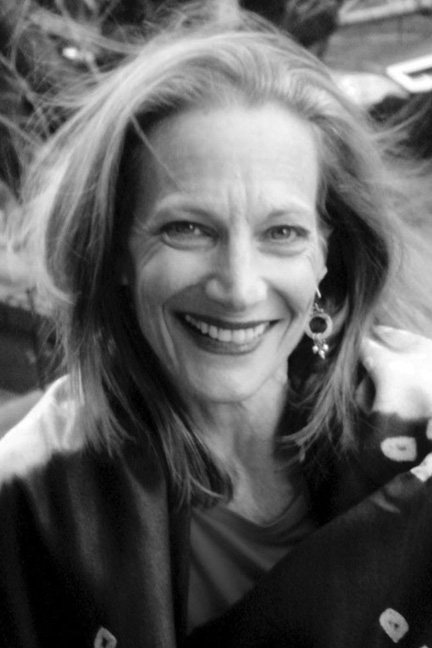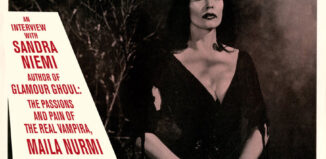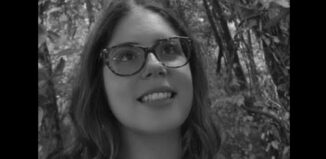Kathryn Harrison Interview

While reading a Los Angeles Times review of Kathryn Harrison’s new book, On Sunset, I was immediately fascinated by the story of someone growing up in a large whimsical Robert Byrd house on Sunset Blvd., yet never experiencing the life around her. She was not so much trapped as she was protected from a Los Angeles of the 1960s by her over-protective — somewhat eccentric — well-mannered grandparents. She lived a life that most children dream of, living in a beautiful affluent neighborhood, but she rarely ventured out from her home other than to attend school. Quite a story. Shortly after reading the review, I contacted Kathryn, who now lives in New York, and she graciously consented to an interview for this issue.
Kathryn Harrison is the author of the novels Envy, The Seal Wife, The Binding Chair, Poison, Exposure, Thicker Than Water and Enchantments. She has also written memoirs, The Kiss and The Mother Knot, a travel memoir, The Road to Santiago, a biography, Saint Therese of Lisieux, and a collection of personal essays, Seeking Rapture.
Ms. Harrison is a frequent reviewer for The New York Times Book Review; her essays, which have been included in many anthologies, have appeared in The New Yorker, Harper’s Magazine, Vogue, O Magazine, Salon, and other publications.
Her latest book is On Sunset: A Memoir. She lives in New York with her husband, the novelist Colin Harrison, and their children. She is currently working on a novel.
INTERVIEW:
What made you want to write about your childhood at this time in your life? Is this something you’ve been wanting to do for a while?
It’s taken me this long to recognize how unusual a childhood I had. I had to have raised a family immersed in American culture before I could regard my childhood in contrast.
Mine took place 100 years before I was born; it began with my grandparents’ parents, who were more alive to me than my classmates. The unexpected child of teenagers, I was brought up by my mother’s parents, who like most old people lived in their pasts, and took me along. They were both wonderful story-tellers, with dramatic pasts, and there were days I spent hours enthralled by my family’s history.
How long did it take to write this book? Was it conceived as a tribute to your grandparents?
The writing itself took about 18 months, the research preoccupied my youth—all those hours of listening to family stories. I was lucky enough to inherit countless photographs, letters, diaries, and objects, as well—which allowed me to include illustrations, which makes for a richer experience. Grownups like pictures, too!
It wasn’t intended as a tribute, but my feelings for them, my missing them as much as I do decades after their deaths, it was inevitable that the book turn out to be, as a couple of critics observed, a love letter.
You grew up in a spectacular Robert Byrd designed home — a lavish, quirky, sprawling ranch style home. I’ve seen photographs of the exterior and interior, with the lush grounds and swimming pool. It must’ve been like living in your own private oasis, hidden in the middle of Los Angeles.
It was. I’m sure if I were to return to that garden it would seem small: it would have to, because my 50-year old memories include no property lines, Sunset, my internal landscape, is limitless.
There were times in your childhood when your grandparents were around to watch and raise you, and other times when you were on your own. How did you feel living in such a large home and being somewhat isolated from the rest of the world?
People comment that mine seems a lonely childhood, but I don’t remember it that way. For me it was a mythic time of safety, over which my grandparents ruled, benign dictators. I was a solitary child, shy and bookish—way too bookish according to my grandmother, who called me a bluestocking. I took it as a compliment, although it was not meant as one. I was happy left to myself and my overactive imagination.
You couldn’t really walk out the front door and down the street to a store, being such a busy boulevard without sidewalks. But you probably wandered around the neighborhood at some point.
I didn’t actually. I saw the neighbor boys’ house, but there was truly no access to anyone else’s: no sidewalk, no wandering.
What was your school life like? Did you have close friends, a best friend? Did you enjoy spending time at your friend’s homes? What did you do on weekends? Were there pool parties at your home?
I had a best friend, Francesca, whose greatest appeal was that she was also being raised by a flighty young mother’s European grandparents. I lived among families in which there were few divorces. No one else had a single mother and absent father, no one but Francesca.
I didn’t like being at other children’s houses, not when I was a young child. I never slept over; I was always scared of being left in the care of other children’s parents.
I loved school. I was a teacher’s pet, often closer to teachers than classmates, perhaps because I spent so much time in the company of people many years my senior. Weekends were blighted by ballet and Christian Science Sunday school, at least during the years we lived on Sunset. I was always in the pool, and usually by myself. By the time my grandparents were in their 70s, the pool party years were waning.
It seems like a lot of your outdoor activities were spent shopping and dining. Department stores were quite elegant back then. How do you remember them? What were some of your favorite restaurants?
I didn’t like shopping. The stores were elegant indeed, and there was an abundance of customer service — too much of it as far as I was concerned. I was a tomboy who didn’t want the dresses I was buttoned into. The salesladies struck me as part of a conspiracy to ruin my real outdoor life, largely spent climbing trees.
My grandparents were Victorian, and thus I was to be seen and not heard, excluded from any restaurant that wasn’t casual. I remember Hamburger Hamlet, where I was allowed to leave the table to ponder the extremely odd little dioramas that hung on the wall that ascended alongside the red carpeted stairs. One was captioned, “Get thee to a Bunnery.” There was also Uncle John’s pancake house, where children were given black mustaches cut out of cardstock, with two prongs to insert into your nostrils. They hurt, which was one more reason not to put one on. I didn’t go to restaurants that required reservations.
Have these memories always been with you, or did some memories come back to you while writing this book?
Always. I have damnably good recall, especially for emotionally charged situations. My mother’s problematic and erratic presence made me a vigilant child, always paying attention.
Were you free to move about the city and take in the unique qualities of Los Angeles? Were you more in tune with the local culture at this time?
I was raised to form myself in opposition to American children and culture, which meant I lived in 1900. Outside the door was the pool and the garden, inside there was Shanghai and Alaska.
Your grandparents also lived in a home on Hilgard across from UCLA? When did they move into the home on Sunset Blvd.?
My grandparents worked with Robert Byrd who built the house on Sunset in 1951. They lived there for 20 years.
I love this line in the book. It seems to capture the essence of your world. — “I live where I can’t be followed, where I don’t need and wouldn’t bring other children…”
I was very protective of my magic kingdom. I knew no other child would respect its boundaries.
What are you working on now?
A novel set in Vienna in the 1920s,
Any advice for writing a memoir?
Lean toward discomfort.
What is your daily writing routine like? What do you do for fun and recreation?
I’m a morning person, so I am at my desk by 6 or 7. I work until I go to yoga class around noon, as I do every day. Then I might put in a few more hours—it depends on how full-tilt I’m going. I’m a homebody with a night life that is currently mostly going to class, as I’ve begun psychoanalytic training. A long-held dream I can satisfy now that my youngest is in college.
Are you involved with Facebook, Instagram, Twitter, etc.? How much time do you spend on the internet each day?
Not with any of them, so they take up no time.
What are some your favorite books currently?
At the moment it’s all Freud, Klein, Winnicott, Lacan … Not everyone’s leisure reading, but I’m fascinated.
You mentioned that your grandparents worked with Robert Byrd — in what capacity? Were they friends?
My grandparents worked with Robert Byrd to design the house they wanted. It looked like an out-sized Tudor ranch house — L.A. qua London — with a lot of playful details.
Byrd was a renowned architect at the time, and my grandparents had the money to be extravagant. They didn’t for long, but in 1950 they could request any fancy, or luxury:
- Windows made of bottle bottoms.
- Actual bird houses built into the house, under the eaves.
- My mother’s bedroom had a copper-hooded fireplace, with a delft tile hearth.
- The living room fireplace had a wood-box built into an adjacent wall, with one door inside the house and another outside, so you didn’t have to carry wood through the house. In Los Angeles, we burned a cord of wood every “winter.” My grandparents hated to be cold, and the flagstone floors had hot water pipes running underneath them, so with a flip of a switch, they were soon warm beneath your feet.

On Sunset: A Memoir
In the tradition of The Hare with Amber Eyes and Running in the Family, a memoir of the author’s upbringing by her grandparents in a fading mansion above Sunset Boulevard — a childhood at once privileged and unusual, filled with the mementos and echoes of their impossibly exotic and peripatetic lives.
“Stunning … This is Kathryn Harrison in top form.” –Augusten Burroughs
“Transfixing… Fairy-tale fascinating, profoundly revealing of cultural divisions, and brilliantly and wittily told … Harrison’s entrancing look-back casts light on resonant swaths of history.”
—Donna Seaman, Booklist
“Evocative and tender, this delightful memoir pairs the distant past with a safe and sacred time in the author’s young life.”
—Publishers Weekly
For more information:


















